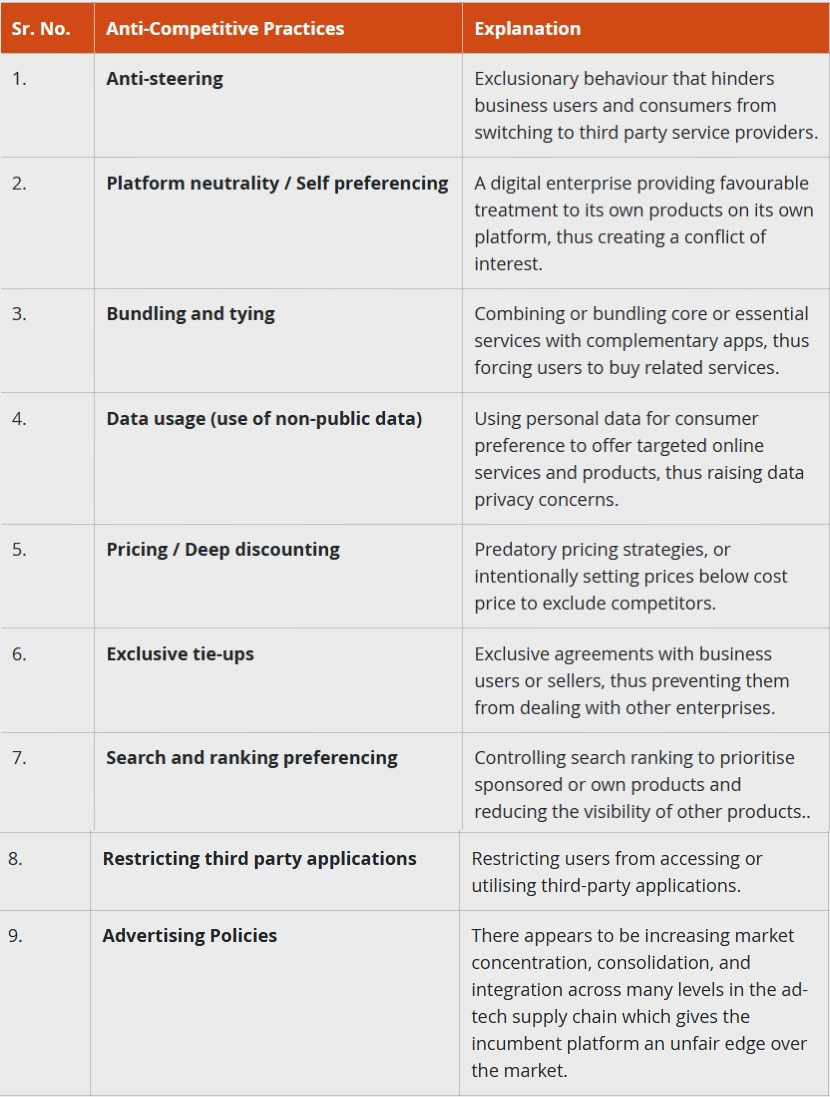Free Courses Sale ends Soon, Get It Now


Free Courses Sale ends Soon, Get It Now



Copyright infringement not intended
Picture Courtesy: https://finshots.in/archive/whats-the-digital-competition-bill-anyway/
Context: India has proposed a new digital competition law, the Digital Competition Bill, 2024, to curb market dominance by tech giants like Google, Facebook, and Amazon.
Details

Key Provisions
Predictive Regulation
Significant Entities
Associate Digital Enterprises
Reasons for Big Tech Opposition
Compliance Burden
Impact on Innovation
Restrictions on Business Practices
Broad Definition of Significant Platforms
|
Government officials argue that big tech companies have anti-competitive practices and a presumptive framework is needed to address this. High market barriers and niche online products are relegated to users seeking specific features. The growth of big companies has led to a surveillance-filled digital advertising industry, making it difficult for rivals to challenge their dominance. |
Conclusion
Source:
|
PRACTICE QUESTION Q. What are the major challenges faced by the Indian government in bridging the digital divide between urban and rural areas, and how can these challenges be effectively addressed to ensure equitable access to digital services and infrastructure across the country? |
© 2024 iasgyan. All right reserved